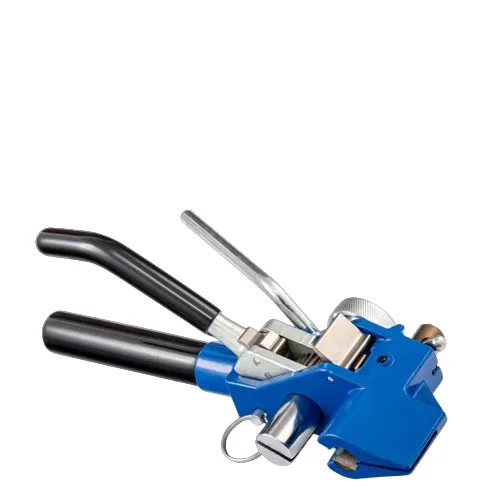
-
 Afrikaans
Afrikaans -
 Albanian
Albanian -
 Amharic
Amharic -
 Arabic
Arabic -
 Armenian
Armenian -
 Azerbaijani
Azerbaijani -
 Basque
Basque -
 Belarusian
Belarusian -
 Bengali
Bengali -
 Bosnian
Bosnian -
 Bulgarian
Bulgarian -
 Catalan
Catalan -
 Cebuano
Cebuano -
 Corsican
Corsican -
 Croatian
Croatian -
 Czech
Czech -
 Danish
Danish -
 Dutch
Dutch -
 English
English -
 Esperanto
Esperanto -
 Estonian
Estonian -
 Finnish
Finnish -
 French
French -
 Frisian
Frisian -
 Galician
Galician -
 Georgian
Georgian -
 German
German -
 Greek
Greek -
 Gujarati
Gujarati -
 Haitian Creole
Haitian Creole -
 hausa
hausa -
 hawaiian
hawaiian -
 Hebrew
Hebrew -
 Hindi
Hindi -
 Miao
Miao -
 Hungarian
Hungarian -
 Icelandic
Icelandic -
 igbo
igbo -
 Indonesian
Indonesian -
 irish
irish -
 Italian
Italian -
 Japanese
Japanese -
 Javanese
Javanese -
 Kannada
Kannada -
 kazakh
kazakh -
 Khmer
Khmer -
 Rwandese
Rwandese -
 Korean
Korean -
 Kurdish
Kurdish -
 Kyrgyz
Kyrgyz -
 Lao
Lao -
 Latin
Latin -
 Latvian
Latvian -
 Lithuanian
Lithuanian -
 Luxembourgish
Luxembourgish -
 Macedonian
Macedonian -
 Malgashi
Malgashi -
 Malay
Malay -
 Malayalam
Malayalam -
 Maltese
Maltese -
 Maori
Maori -
 Marathi
Marathi -
 Mongolian
Mongolian -
 Myanmar
Myanmar -
 Nepali
Nepali -
 Norwegian
Norwegian -
 Norwegian
Norwegian -
 Occitan
Occitan -
 Pashto
Pashto -
 Persian
Persian -
 Polish
Polish -
 Portuguese
Portuguese -
 Punjabi
Punjabi -
 Romanian
Romanian -
 Russian
Russian -
 Samoan
Samoan -
 Scottish Gaelic
Scottish Gaelic -
 Serbian
Serbian -
 Sesotho
Sesotho -
 Shona
Shona -
 Sindhi
Sindhi -
 Sinhala
Sinhala -
 Slovak
Slovak -
 Slovenian
Slovenian -
 Somali
Somali -
 Spanish
Spanish -
 Sundanese
Sundanese -
 Swahili
Swahili -
 Swedish
Swedish -
 Tagalog
Tagalog -
 Tajik
Tajik -
 Tamil
Tamil -
 Tatar
Tatar -
 Telugu
Telugu -
 Thai
Thai -
 Turkish
Turkish -
 Turkmen
Turkmen -
 Ukrainian
Ukrainian -
 Urdu
Urdu -
 Uighur
Uighur -
 Uzbek
Uzbek -
 Vietnamese
Vietnamese -
 Welsh
Welsh -
 Bantu
Bantu -
 Yiddish
Yiddish -
 Yoruba
Yoruba -
 Zulu
Zulu


డిసెం . 16, 2024 20:50 Back to list
chain block capacity
Understanding Chain Block Capacity in Blockchain Technology
In the rapidly evolving world of blockchain technology, the concept of chain block capacity plays a crucial role in determining the effectiveness, efficiency, and scalability of various blockchain networks. As digital transactions become more prevalent and diverse, understanding how block capacity affects network performance is essential for developers, users, and investors alike.
What is Block Capacity?
Block capacity refers to the maximum amount of data that a single block in a blockchain can hold. This data generally includes transaction details, timestamps, and cryptographic hashes linking blocks together. In most blockchain architectures, blocks are added in a linear, chronological order, creating a chain that is secure and tamper-proof.
The capacity of a block can significantly influence the overall throughput of a blockchain network, which is essentially the number of transactions that can be processed within a given timeframe. High block capacity can lead to improved transaction speeds and reduced costs, making the network more appealing to users. Conversely, limited block capacity may result in backlogs and longer confirmation times, potentially hampering the overall user experience.
Factors Influencing Block Capacity
Several factors determine a blockchain's block capacity, such as
1. Block Size This is the fundamental measurement of how much data can be included in a single block. For instance, Bitcoin has a block size of 1MB, while other blockchain networks like Bitcoin Cash have increased their block size to allow for more extensive data per block.
2. Block Time The frequency with which new blocks are added to the chain also impacts capacity. Shorter block times can facilitate higher transaction rates, provided that the average block size remains manageable.
3. Transaction Complexity The more complex a transaction, the more data it requires. For example, smart contracts on platforms like Ethereum often result in larger transaction sizes compared to simple transfers, thereby pushing the limits of block capacity.
chain block capacity

4. Network Protocols Different blockchain protocols have varying methods for achieving consensus and validating transactions, which can affect how quickly blocks are produced and how many transactions they can contain.
Scalability Challenges
As blockchain networks grow in popularity, they face significant scalability challenges associated with block capacity. For instance, during periods of high demand, transactions may become congested, leading to increased fees and longer wait times for confirmations. This was notably observed during the CryptoKitties boom in late 2017, when Ethereum's capacity was nearly maxed out, highlighting the need for scalability solutions.
Several approaches have been proposed to address these challenges, including
- Layer 2 Solutions Technologies like the Lightning Network for Bitcoin or state channels for Ethereum allow transactions to occur off the main blockchain, which can alleviate congestion and improve speed.
- Sharding This method involves breaking down the blockchain into smaller, more manageable pieces, or shards, allowing for parallel processing of transactions and effectively increasing the network's capacity.
- Hard Forks Some blockchain communities opt for hard forks—significant changes to the protocol that alter block size or other parameters to increase capacity. This approach, however, can lead to community division and the creation of new blockchain versions.
The Future of Block Capacity
As the field of blockchain technology continues to develop, so too will solutions for enhancing block capacity. The future might see more flexible scalability solutions that permit adjustments to block size or frequency in response to network demand. This adaptability will be essential in ensuring that blockchain remains a viable option for global transactions in a fast-paced digital economy.
In conclusion, chain block capacity is a fundamental aspect of blockchain technology that affects overall performance, user experience, and scalability. By understanding and addressing the factors that influence block capacity, developers and stakeholders can work towards creating more robust and efficient blockchain systems capable of meeting the demands of an increasingly digital world.
Latest news
duct-rodders-and-conduit-rod-tools
NewsAug.22,2025
ratchet-pullers-and-wire-tightening-tools
NewsAug.22,2025
chain-ratchet-pullers-and-hoist-solutions
NewsAug.22,2025
telescopic-hot-stick-for-electrical-and-high-voltage-use
NewsAug.22,2025
cable-clamp-and-insulated-cable-clamp-systems
NewsAug.22,2025
duct-rodder-conduit-rodder-and-cable-solutions
NewsAug.22,2025








